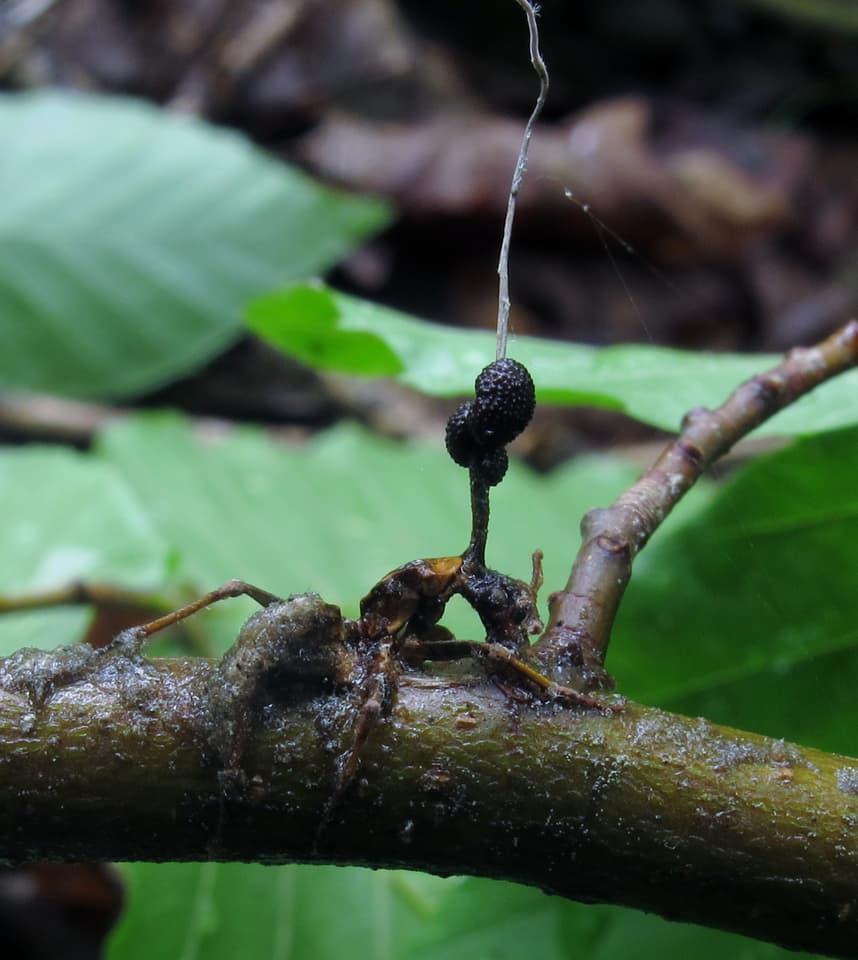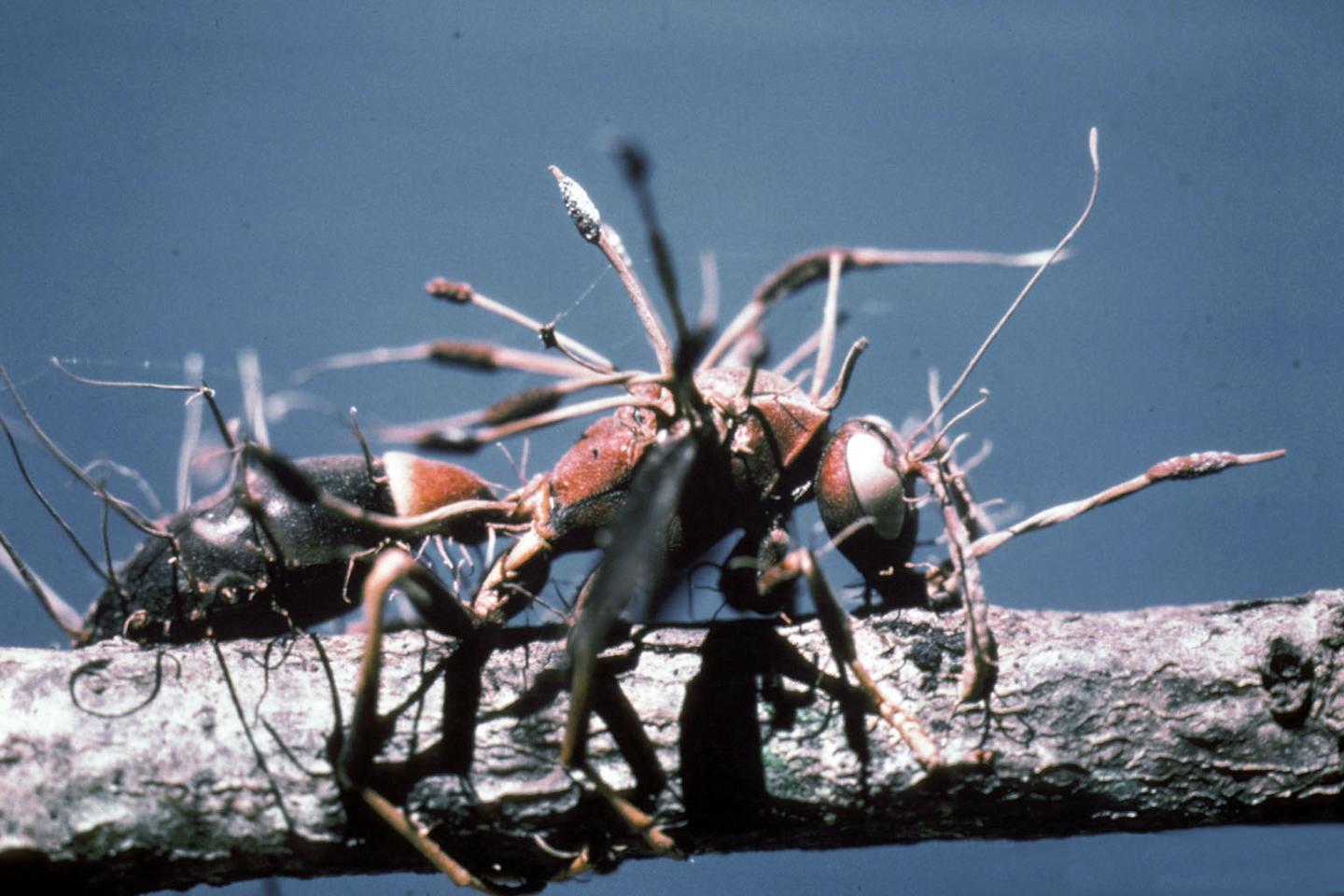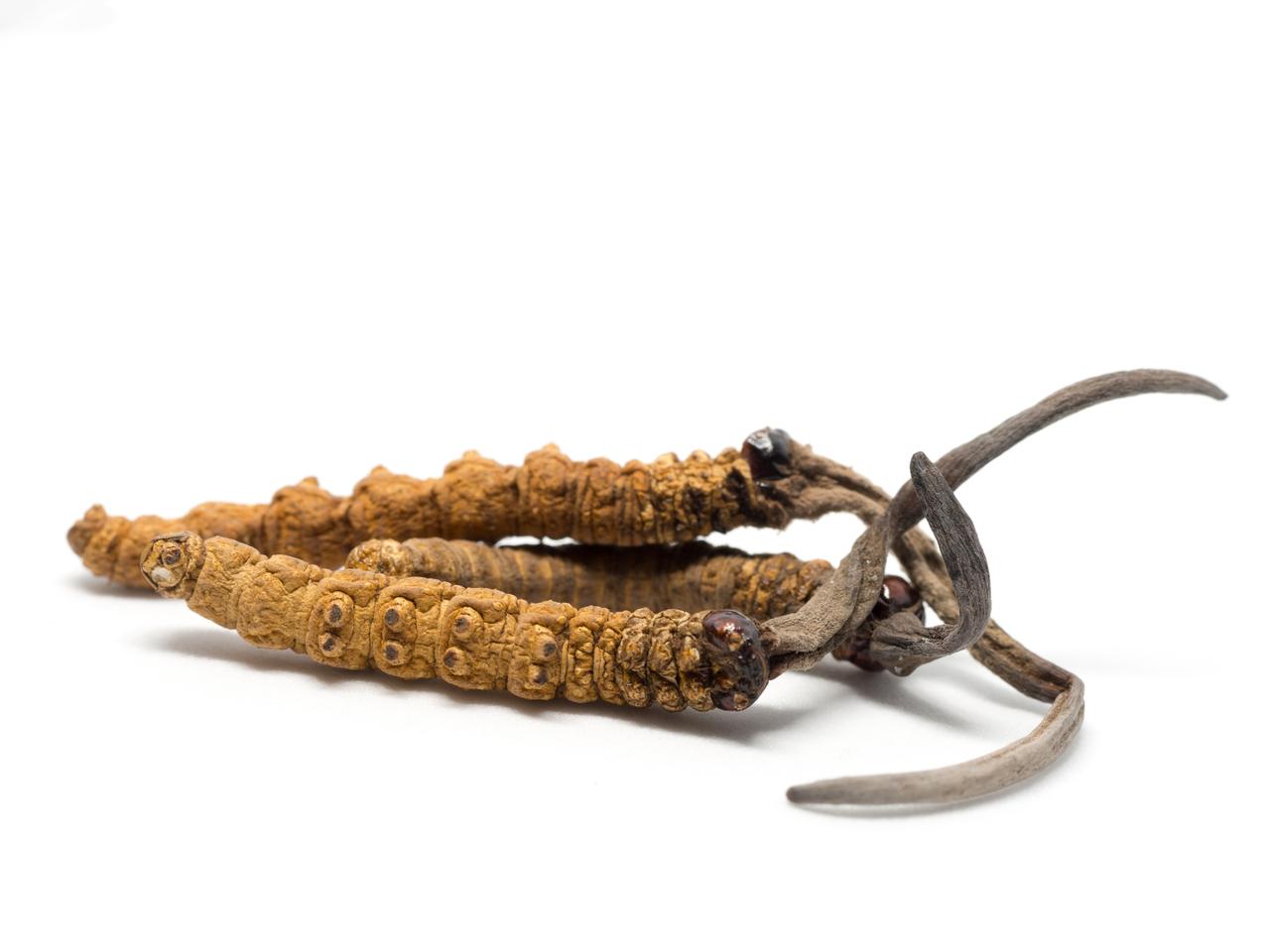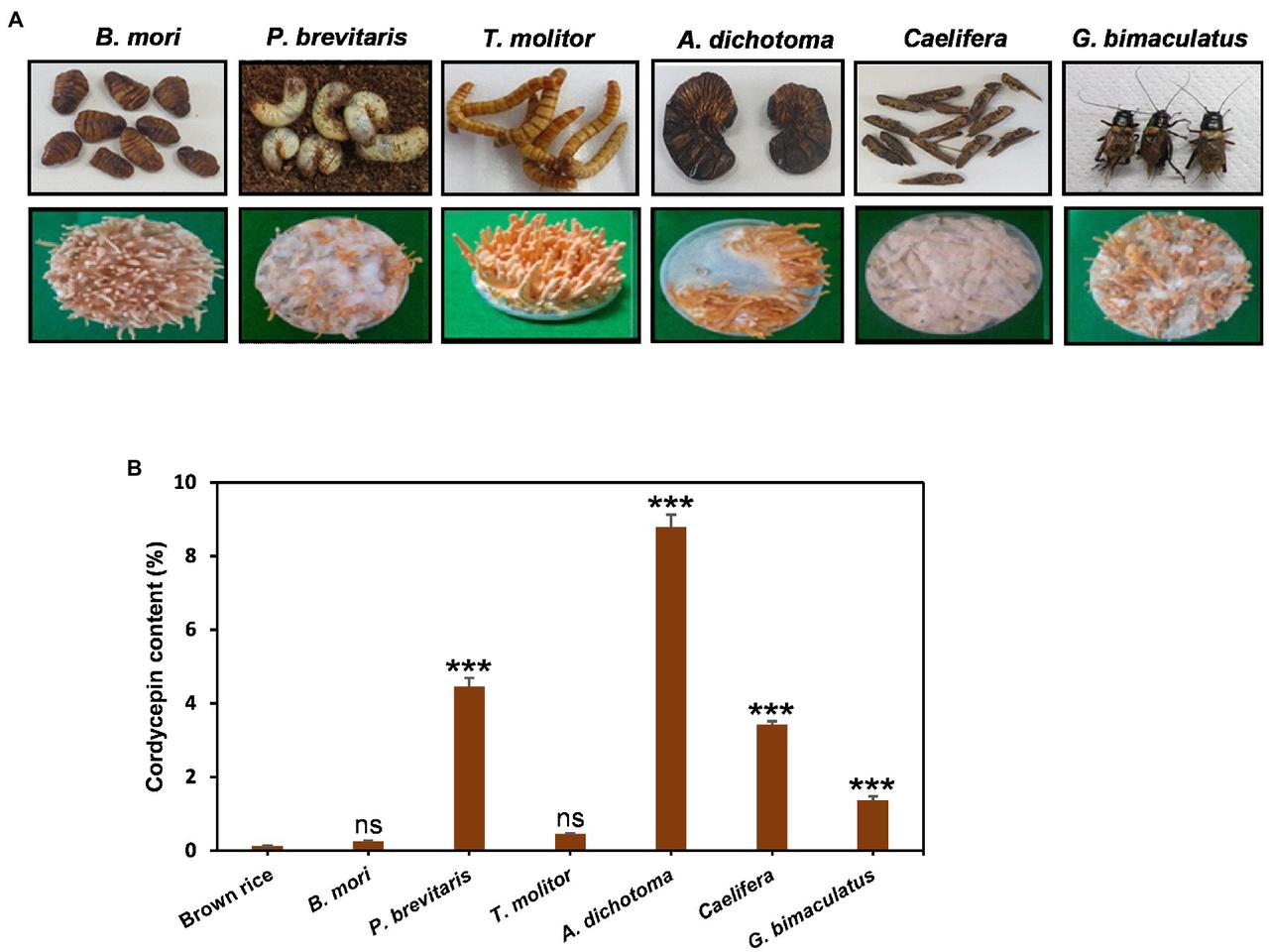You might know the Cordyceps mushroom as the “zombie fungus” – for good reason. Its name is derived from Greek and Latin, meaning “club head,” and many nature documentaries have focused on its chilling ability to infect certain insects, most famously ants, and literally hijack their bodies. Cordyceps has evolved alongside these ants and made them a staggeringly complex and macabre part of its reproductive cycle.
Most of us wouldn’t typically think of fungi as particularly smart, but Cordyceps is an excellent window into how little we understand about fungi. When a single Ophiocordyceps unilateralis spore infects an ant, it begins to travel through its bloodstream, multiplying. Before long, these individual cells start working in concert, linking up via tubular hyphal protrusions to begin communicating and sharing nutrients.
These fungal hyphae then begin to spread into the muscles of the ant, penetrating and encircling muscle fibers all over the ant’s body, with one notable exception. Unlike the zombies of sci-fi, Cordyceps typically leaves the ants’ brains completely untouched. Instead, acting as a superorganism, the fungal network starts strangling out the ant’s motor neurons until the ant’s perfectly intact brain is more or less totally isolated from its body.

If the process sounds incredible so far, what happens next is positively frightening. The fungus takes over the ant’s body and begins “driving” it like you or I might a car. The ants’ locomotion systems are relatively simplistic, and Cordyceps has learned over the aeons how to operate the legs. This would be a stunning feat in itself, but the fungus also knows exactly where it wants its host to go next.
It drives the ant to find a vertical plant shoot or tree trunk to climb, close to the ant nest. It drives the ant about 25 cm (10 in) up the plant, where the temperature and humidity are most suitable. And it drives the ant to bite down on the central stem of a leaf, putting its jaw in a death lock and determining the ant’s final resting place.
There’s no way to tell what the ant’s isolated brain is experiencing through this process, but over the coming weeks, its body will be consumed by Cordyceps, and its head will erupt as the fungus’s reproductive organs burst forth into a phallic protrusion that eventually puffs out a fresh batch of fungal spores, which gently float down to the forest floor, from the perfect height, not far from an ant nest, ready to infect new victims.
So far, so Planet Earth, and so The Last of Us. The terrifying fungal intelligence displayed by this ant-puppeteering organism makes outstanding fodder for documentary footage and science fiction. What many people don’t realize, though, is that this is just one particularly gruesome species of Cordyceps. Researchers know of more than 750 others, each of which bases its life cycle around a particular host – often insect larvae – with a process just as finely tailored as the one described above.

What many in Western countries also don’t realize is that certain types of Cordyceps fungi – particularly Cordyceps militaris and Ophiocordyceps senensis – are top-shelf health supplements in many Eastern medicinal traditions, where they’ve been used for centuries to treat fatigue, kidney disease, low libido, respiratory issues, hyperglycaemia and a range of other conditions. There has been a certain amount of scientific research done on the effects of these mushrooms and their constituent chemicals in animal and lab models, and some results have certainly looked promising.
“Its extracts, and bioactive constituents,” reads a 2021 review of peer-reviewed research in the journal Frontiers in Pharmacology, “have been related with cytokine production such as interleukin and tumor necrosis factor (TNF)-α, phagocytosis stimulation of immune cells, nitric oxide production by increasing inducible nitric oxide synthase activity, and stimulation of inflammatory response via mitogen-activated protein kinase pathway. Other pharmacological activities like antioxidant, anti-cancer, antihyperlipidemic, anti-diabetic, anti-fatigue, anti-aging, hypocholesterolemic, hypotensive, vasorelaxation, anti-depressant, aphrodisiac, and kidney protection, have been reported in pre-clinical studies.”
Its popularity as a health, energy, immune and endurance-boosting supplement, combined with a complex reproductive process relying on other organisms, have made Cordyceps extremely expensive. And while lab-grown “vegetarian” Cordyceps CS-4 extracts are widely commercially available as affordable (and largely unregulated) health tonics, these are typically grown on fermented rice grains.

The problem, according to researchers at Korea’s Chungbuk National University, is that putting Cordyceps on this kind of vegan diet results in an inferior product, with particularly low levels of a key bioactive compound called cordycepin, which the researchers consider the significant “therapeutic” component.
So the team set out to investigate whether growing a cultured strain of Cordyceps militaris in the lab on a substrate made from insect instead of rice would boost its levels of useful cordycepin. The team collected six different commercially available types of dried insect, all approved to be sold as food in Korea: crickets, silkworm pupae, mealworms, grasshoppers, white-spotted flower chafer larvae, and Japanese rhinoceros beetles, with brown rice as a control. Then, they cultured Cordyceps on them for two months, harvested the fruiting bodies of the fungus, and analyzed each type to see how much cordycepin was produced.
The results were wildly varied, but all the insect-based fungi produced considerably more cordycepin than the ones fed on rice. The worst-performing insect, the silkworm pupae, produced about three times more cordycepin than the rice. The best, the Japanese rhinocerous beetle, produced about 100 times more than the rice.

Chungbuk National University
The researchers managed to narrow the main factor down to the insects’ fat content – specifically, their levels of oleic acid. When oleic acid was added to the silkworm pupae, it improved cordycepin production by an impressive 50%.
“The cultivation method of Cordyceps suggested in this study will enable the production of cordycepin more effectively and economically,” said Dr Lee, senior author of a new research paper describing this work. “However, securing edible insects is not yet sufficient for scale-up to industrial level. It is also thought that more efficient production may be possible through the use of other insects, which needs to be demonstrated by further study.”
The research is published in the peer-reviewed journal Frontiers in Microbiology.
Source: Chungbuk National University
Source of Article